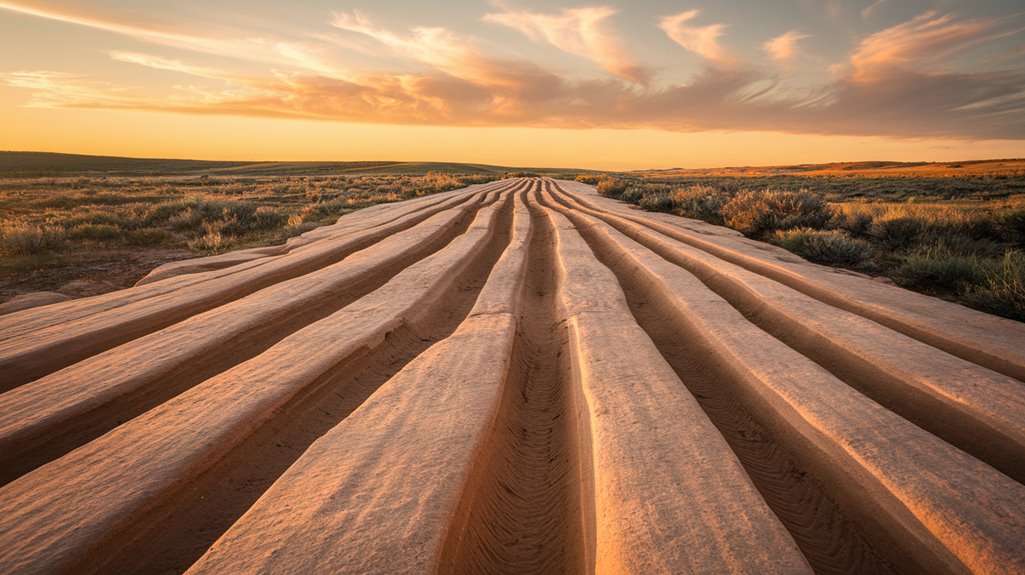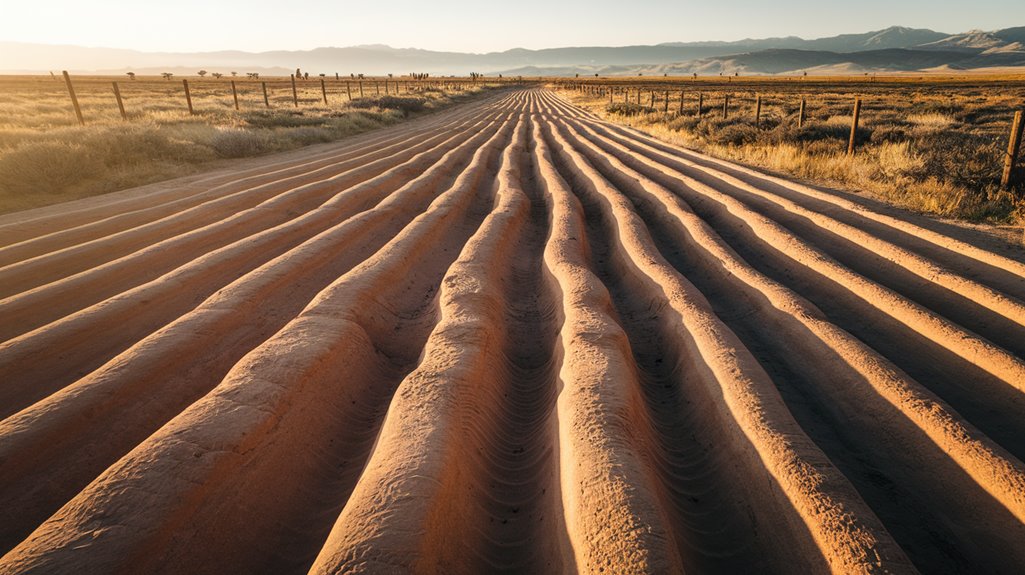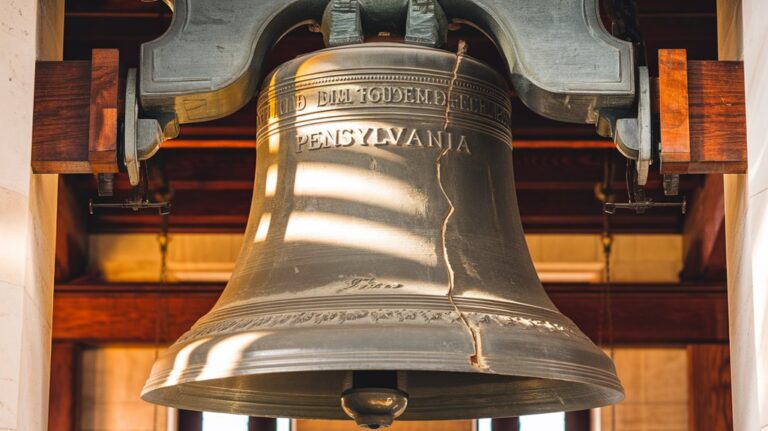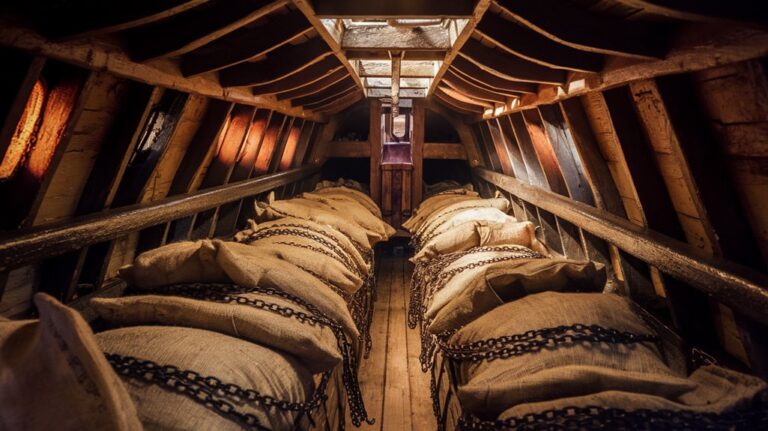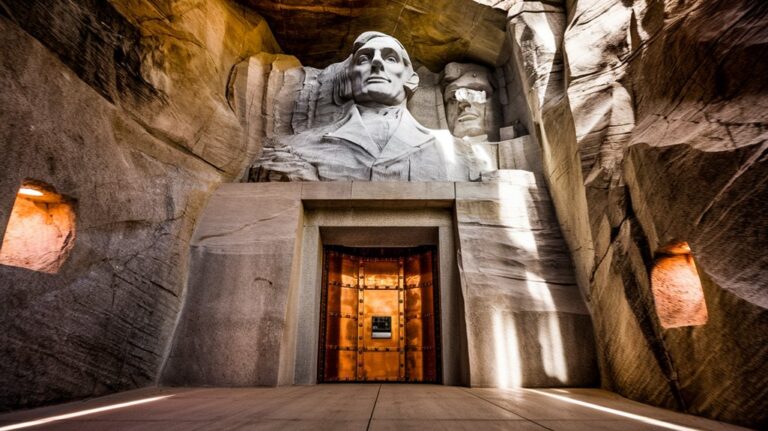Oregon Trail Wagon Ruts Are Still Visible Today
If you've ever wondered what physical evidence remains of America's westward expansion, you'll find your answer carved into Wyoming's landscape. The Oregon Trail's wagon ruts, some as deep as five feet, offer you a direct connection to the 400,000 pioneers who sought new lives in the West. These remarkable tracks have survived thanks to the region's unique geology and careful preservation efforts. There's more to these humble grooves than meets the eye.
The Legacy of Wyoming's Oregon Trail Ruts
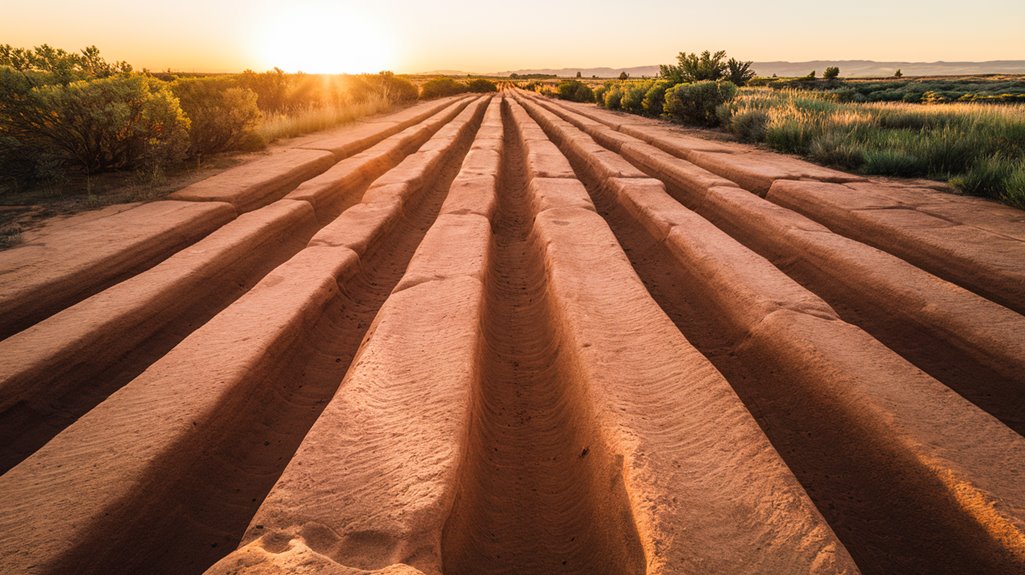
Through countless wagon wheels grinding across solid sandstone, pioneers carved permanent reminders of America's westward expansion near present-day Guernsey, Wyoming.
These ruts, now a National Historic Landmark, represent the best-preserved evidence of the Oregon Trail's historical significance. The iron-rimmed wheels of wagons traveled at twelve to fifteen miles per day across this challenging terrain. You'll find these remarkable grooves just half a mile south of Guernsey, where they've endured since the trail's heaviest use from 1841 to 1869.
The cultural impact of these ruts extends far beyond their physical presence. They tell the story of over 400,000 settlers who braved the journey westward, seeking new opportunities beyond the Rocky Mountains. The trail served as a crucial pathway for fur traders and trappers who initially explored and established the routes that settlers would later follow.
While the trail's active use declined after the Union Pacific Railroad's completion, these deep cuts in the landscape continue to serve as a powerful symbol of one of America's most significant migration periods.
How Nature Preserved These Historic Wagon Tracks
While many segments of the Oregon Trail have vanished over time, Wyoming's unique natural conditions have preserved its historic wagon ruts remarkably well.
You'll find these enduring marks of westward migration preserved by a perfect combination of environmental factors. The region's soft sandstone and arid soils, coupled with minimal development and farming, have enabled natural preservation of ruts that can reach depths of over five feet.
Soil compaction from thousands of wagons and livestock made it difficult for vegetation to grow, while the dry climate and sparse plant life helped maintain the ruts' distinctive shapes. These historic tracks were created by half a million pioneers who traveled westward seeking new opportunities. Today, only 11 miles remain of the original Barlow Road corridor in Oregon due to modern development and natural erosion.
In rocky terrain, particularly where soft sandstone exists, you can still see deep swales and two-track paths cutting through the sagebrush – a reflection of nature's role in safeguarding these historic remnants.
Modern Efforts to Document America's Westward Path
Since the Oregon Trail's designation as a National Historic Trail in 1978, multiple organizations have worked tirelessly to document and preserve America's westward migration routes. The National Park Service, Bureau of Land Management, and Oregon-California Trails Association lead these historical documentation efforts through partnerships with state agencies and private landowners.
You'll find over 125 historic sites and auto tour routes that help you experience the trail today. The preservation techniques include interpretive centers, signage, and markers that tell the pioneers' stories. The trail's 2,170-mile journey stretched across what would become six states from Missouri to Oregon.
Original sketches, notebooks, and paintings provide valuable insights into trail life. The trail posed numerous dangers, with disease outbreaks being one of the most significant threats to emigrants. While modern development threatens some sections, dedicated volunteers and organizations continue protecting the remaining pristine portions.
Through their efforts, you can still connect with this vital piece of American history by visiting preserved wagon ruts and following historical routes.

